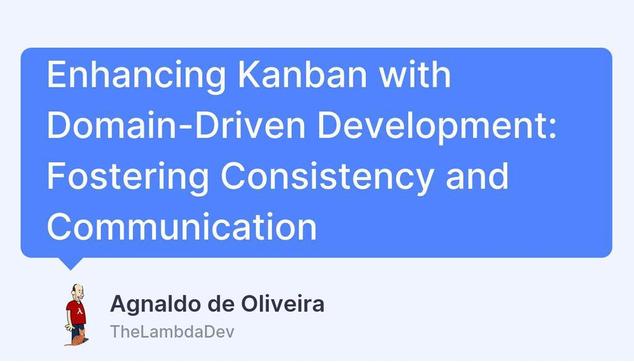Essential Guide to Agile Project Management
The Agile Charter: A North Star for Your ProjectCrafting the Agile CharterAgile Methodologies: Structure Meets FlexibilityUser Stories: Bridging Business and Technical CommunicationExtreme Programming (XP)Kanban: Visualizing WorkflowScrumban: Hybrid ApproachScaling Agile: Gradual and Measured GrowthCommon Pitfalls and How to Avoid ThemConclusionReferencesLearn Agile and Scrum in 2 Hours: The Ultimate Agile 101 Book for Beginners
Agile project management is not just a method; it's an art form that thrives on clarity, alignment, and adaptability. Teams can navigate even the most complex projects with finesse. They achieve this by starting with a well-structured plan and embracing the nuances of Agile practices.
This guide explores the fundamental aspects of Agile planning. It ranges from creating the Agile Charter to mastering various skills. These include tools, techniques, and approaches like user stories, Kanban (method), and scaling Scrum.
The Agile Charter: A North Star for Your Project
In Agile project delivery, clarity and alignment are your best allies. A well-structured plan, though adaptable, lays the foundation for collaborative success.
Let’s explore the steps to craft a focused Agile project. We will start with the Agile Charter (also seeteam charter, which is similar). Then, we will progress through other approaches like user stories, Kanban, and scaling Scrum.
Crafting the Agile Charter
Planning an Agile project starts with a core document. This document serves as a guidepost for the entire team: the Agile Charter.
Unlike traditional plans, which often dictate the path ahead, the Agile Charter is more like a handshake. It is a mutual agreement on the project’s vision, mission, and aspirations. Its simplicity is its power.
The charter is kept to a single page. It sets the tone by asking fundamental questions:
Why are we embarking on this journey? That’s your vision, the purpose that drives the team.
How will we get there? That’s the mission, laid out in a succinct business paragraph capturing overall goals, user roles, and key aspirations.
To keep everyone aligned, the charter includes clear success criteria. These are presented in the form of a single sentence. It is an unambiguous task that ensures the mission is accomplished.
The Agile Charter focuses on aspirational statements within timeframes. It becomes a north star. It avoids functionality details while enabling the team to reference and review it. This approach helps measure if the project delivered on its promise.
Agile Methodologies: Structure Meets Flexibility
As the project unfolds, Agile methodologies come into play, offering structure and flexibility.
User Stories: Bridging Business and Technical Communication
User stories are a cornerstone of Agile methodologies. They serve as concise descriptions of a feature from the end-user's perspective. These stories ease clear communication between business stakeholders and technical teams. For example, consider a user story for a new e-commerce website.
It states, As a shopper, I want to filter products by price. This helps me find items within my budget.
This user story outlines a specific requirement and bridges the gap between business needs and technical implementation.
Extreme Programming (XP)
Practices like Extreme Programming (XP) show the advantages of pair programming, where two programmers work together. This method increases productivity and enhances code quality while minimizing distractions.
In a software project, pair programming helps developers share knowledge. It allows them to spot errors quickly. This results in a stronger and more dependable codebase.
Kanban: Visualizing Workflow
The Kanban method offers a visual system that limits work in progress (WIP) to keep workflows moving smoothly. For example, a Kanban board can visually track tasks through various stages—To Do, In Progress, and Done. This enables teams to quickly spot bottlenecks. It also helps keep productivity.
Kanban boards are useful information radiators.
Scrumban: Hybrid Approach
For teams seeking flexibility, Scrumban combines elements of Scrum and Kanban. This hybrid approach adapts to changing requirements, allowing teams to keep agility while benefiting from structured workflows.
Scaling Agile: Gradual and Measured Growth
As projects grow, the temptation to scale Scrum often arises. Yet, Agile principles remind us to scale only when absolutely necessary and to do so gradually. The key is to build a solid foundation first.
Tip: Make sure that the technical architecture and first development are in place. Do this before expanding the team or scope. Scaling Agile is less about doing more and more about doing it right.
Common Pitfalls and How to Avoid Them
While Agile methodologies offer many benefits, there are common pitfalls that teams should be aware of:
Overcommitting: Avoid promising more than can be delivered within a sprint or iteration.
Lack of collaboration: Encourage ongoing communication between team members and stakeholders.
Inadequate training: Make sure all team members are well-versed in Agile principles and practices.
Ignoring feedback: Act on user and stakeholder feedback to continuously improve.
Neglecting documentation: Keep essential documentation without overburdening the team.
Conclusion
By focusing on collaboration, adaptability, and clear communication, Agile project planning becomes a strategic enabler of success.
With these principles in place, teams can navigate challenges and deliver exceptional value to their users.
Embrace the art of simplicity and precision in Agile planning, and let your projects thrive with clarity and purpose. It's time to start your Agile journey. Start by crafting your Agile Charter. Harness the power of user stories. Visualize your workflow with Kanban, and scale smartly. The future of project management awaits you.
References
Larman, C., & Vodde, B. (2008). Scaling Lean & Agile Development: Thinking and Organizational Tools for Large-Scale Scrum.
Schwaber, K., & Sutherland, J. (2020). The Scrum Guide.
Kniberg, H. (2010). Kanban and Scrum: Making the Most of Both.
Beck, K. (2004). Extreme Programming Explained: Embrace Change.
Cohn, M. (2004). User Stories Applied: For Agile Software Development.
Learn Agile and Scrum in 2 Hours: The Ultimate Agile 101 Book for Beginners
https://www.amazon.com/Learn-Agile-Scrum-Hours-Beginners/dp/0994169345
Master Agile and Scrum—in Just Two Hours!
Tired of endless theory and complicated explanations? Discover how Agile really works—and how it can transform your projects—in just two hours.
Learn Agile and Scrum in Two Hours by Agile practitioners Luke Pivac and Kieran Morgan cuts through the jargon to deliver a clear and practical introduction to Agile and Scrum. Whether you're completely new to Agile, transitioning from traditional waterfall project management, or simply seeking a quick refresher, this concise guide will give you everything you need to get started quickly and confidently.
In just two hours, you'll learn:
Agile Concepts: Discover what Agile truly is, how it stands apart from traditional project management methods, and why organizations around the globe are embracing this approach.
Scrum Simplified: Understand Scrum—the world’s most popular Agile framework—from key roles and artifacts to daily stand-ups and workflows.
Agile Process & Practice: Learn how to break down complex tasks into epics, features, and user stories, enabling you to manage Agile projects from start to finish.
Agile Mindset: Cultivate an Agile mindset that values adaptability, collaboration, and continuous improvement—core skills that boost team performance, innovation, and productivity.
Who This Book Is For:
Agile beginners and those new to Scrum
Project Managers and Business Analysts transitioning to Agile environments
Scrum Masters and Product Owners needing an essential reference
Executives and Leaders seeking an efficient, strategic understanding of Agile
Praise for This Book
“Distils what can often feel like an overwhelming and jargon-heavy subject into something both practical and easy to digest.”
Markus Kopco, Principal Program & Project Management Consultant; Certified Scrum Master
“This book does a great job of making Agile easy to understand and keeping it light!”
Bill Raymond, Host of Bill Talks AI
“A really nice introduction to Agile. Covers all the main concepts and doesn’t get sidetracked into focusing on tooling or commercial frameworks.”
Jason Leeming, Head of Portfolio & Governance






